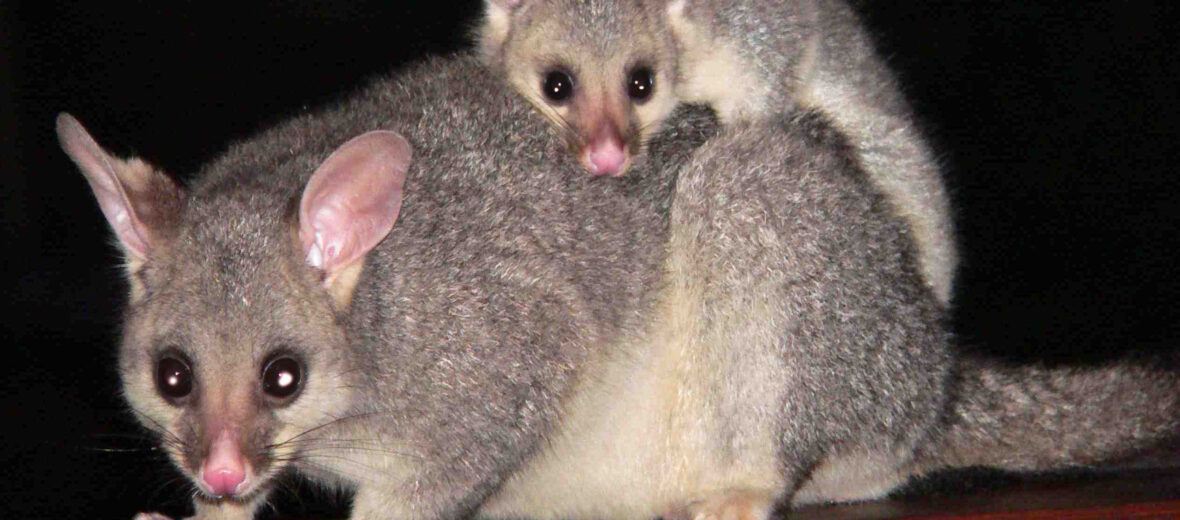
Out of the 23 known possum species in Australia, there are 2 that you’ll most likely come across at night: the common brushtail possum (Trichosurus vulpecular), this scientific name means “furry tailed little fox”, and the common ringtail possum (Pseudocheirus peregrinus), this scientific name means “false hand pilgrim”. They, like all possums, are marsupials (the baby develops in an abdominal pouch outside of the womb, called a marsupium).
First the Stats…
Scientific name: Trichosurus
Weight: Up to 7 lbs.
Length: Up to 20 inches (plus up to a 20 inch long tail)
Lifespan: Approximately 13 years
Now on to the Facts!
1.) A female possum is called a jill, a male is called a jack. Young possums are called joeys. A group of possums is called a passel.
2.) These creatures are considered pests as they destroy crops and gardens as well as leave smelly feces and urine in their wake.
3.) Possums are technically omnivores (eat plant and animal matter), they favor eucalyptus and other leaves, buds, ferns, fruit, and flowers. Brushtail Possums are known to be tolerant of a variety of toxic plants and will eat plants that other critters find poisonous. Possums will also eat insects, grubs, moths, snails, bird eggs, and baby birds.
4.) These possums communicate through a series of clicks, hisses, coughs, grunts, chattering, and screeching.
5.) Australian possums are territorial animals and will typically urinate and rub oil from glands on their chest, chin, and anus to mark their territory.
But wait, there’s more on the Australian possum!
6.) Even though they are territorial, they are not usually aggressive. If confronted by another possum, they will stand still and make their ears stand up to signal that this is their territory. If trapped though possums can and will defend themselves by spraying urine, biting, scratching, and shrieking.
7.) Possums can sometimes carry a variety of ticks, mites, and other parasites; including bacterial infections (some of which are zoonotic; can be transmitted humans). Possum feces may also carry the buruli bacteria, which can cause large skin ulcerations in humans.
Did you know…?
The Common Ringtail is the only species of possum known where the male assists in caring for the young.
8.) Australian possums have a prehensile tail which allows them to grasp branches, when navigating through trees, like having another hand. They also use their tails for carrying nesting materials too, such as bunches of grass and twigs by wrapping their tails around the item in question.
9.) Possums are nocturnal (active at night).
10.) They are predominantly arboreal (spend most or all of their time in trees).
Now a Short Australian Possum Video!
Also, check out the Critter Science YouTube channel. Videos added frequently!
Want to suggest a critter for me to write about? Let me know here.



